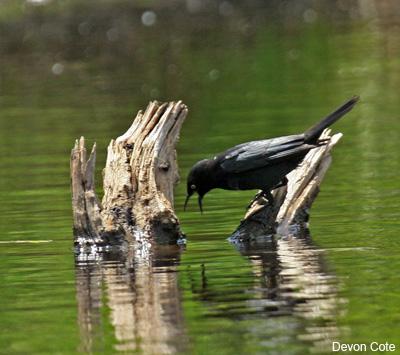An Investigation of Rusty Blackbird Foraging Sites: Does Timber Harvesting Influence Site Selection?

Rusty Blackbird (RUBL) populations have declined by about 90% since the 1960s. The species has since been listed as Vulnerable on the International Union for Conservation of Nature (IUCN) Red List and a Focal Species of Birds of Management Concern by the U.S. Fish and Wildlife Service. To better understand habitat requirements of the RUBL, and in the future determine reasons for RUBL decline and potential for recovery, NSRC researchers examined foraging habitat suitability in areas used by breeding RUBLs, which primarily prey on aquatic invertebrates during the summer.
Study sites were located within a 1,253.5 km2 area of Coos County, New Hampshire on Umbagog National Wildlife Refuge and land privately managed by Wagner Forest Management Ltd. To capture potential changes in foraging activity and invertebrate availability, researchers surveyed 22 beaver wetlands throughout different stages of the RUBL breeding season. During each visit, they recorded RUBL detections and behavior and collected aquatic invertebrate samples from wetlands. They observed RUBLs using floating debris and tree stumps as perches to forage in deep wetlands.
Researchers recommend 30 minutes as an optimal survey length for land managers who want to monitor RUBL populations. Their data suggest that for RUBLs in New Hampshire, detectability is not dependent on time of day. Also, they observed very low detection rates following the two weeks after chicks fledged in June. Understanding wetland prey availability and suitable foraging habitat for RUBLs will enable biologists, foresters, land managers, and the Umbagog National Wildlife Refuge, in particular, to identify and maintain high-quality foraging sites.
